Poker Hands Ranked – What Beats What in Texas Hold’em

27 minutes
Last Updated: July 2, 2022
If you are looking to start playing Texas Hold’em, you should begin by learning what beats what in the game. In other words you should learn how the poker hands are ranked.
Below is the poker hand chart for Texas Hold’em. We advise you to memorize this table before you play your first poker hand.
Chances are that your opponents already know the poker hand order, and you will be at a serious disadvantage if you don’t know them.
|
Hand |
Consists of |
Example |
|
Royal Flush |
A, K, Q, J,10 of the same suit |
Ah Kh Qh Jh Th |
|
Straight Flush |
Five cards in a row of the same suit |
3s 4s 5s 6s 7s |
|
Four of a Kind |
Four cards of the same rank |
9c 9s 9h 9d As |
|
Full House |
Three cards of the same rank + pair |
As Ad Ah Kc Ks |
|
Flush |
Five cards of the same suit |
Ad 8d 9d Kd 3s |
|
Straight |
Five cards in a row |
9s 10d Jc Qs Kh |
|
Three of a Kind |
Three cards of the same rank |
10h 10s 10c Ah Kh |
|
Two Pair |
Two different pairs |
7c 7s 5s 5h 9d |
|
One Pair |
Two cards with the same rank |
Kd Kc 8s As 3c |
|
High Card |
Combination without a made hand |
Ac Jd 4d 6s 2h |
As you can see from the table, the harder it is to get a hand, the stronger it is. If you are struggling to remember these hand rankings, use this as a rule of thumb.
Texas Hold’em Poker Hands: Royal Flush

A poker hand that contains a straight from 10 to A in which all cards are of the same suit is called the Royal Flush.
Royal Flush is the strongest hand you can have in Texas Hold’em poker and if you get one, you are guaranteed to win the hand. Unless of course, you fold, which we don’t recommend.
Because Royal Flush contains the top five cards of a suit, there are only four possible combinations of this hand:
- As Ks Qs Js 10s
- Ac Kc Qc Jc 10c
- Ad Kd Qd Jd 10d
- Ah Kh Qh Jh 10h
Since Texas Hold’em Poker is played with two hole cards and 5 community cards, only one player can have a Royal Flush during a hand.
In other formats of poker which don’t include community cards, two or more players can have a Royal Flush during a hand.
In situations where two or more players have a Royal Flush and the hand goes to showdown, the pot will be split.
Texas Hold’em Poker Hands: Straight Flush
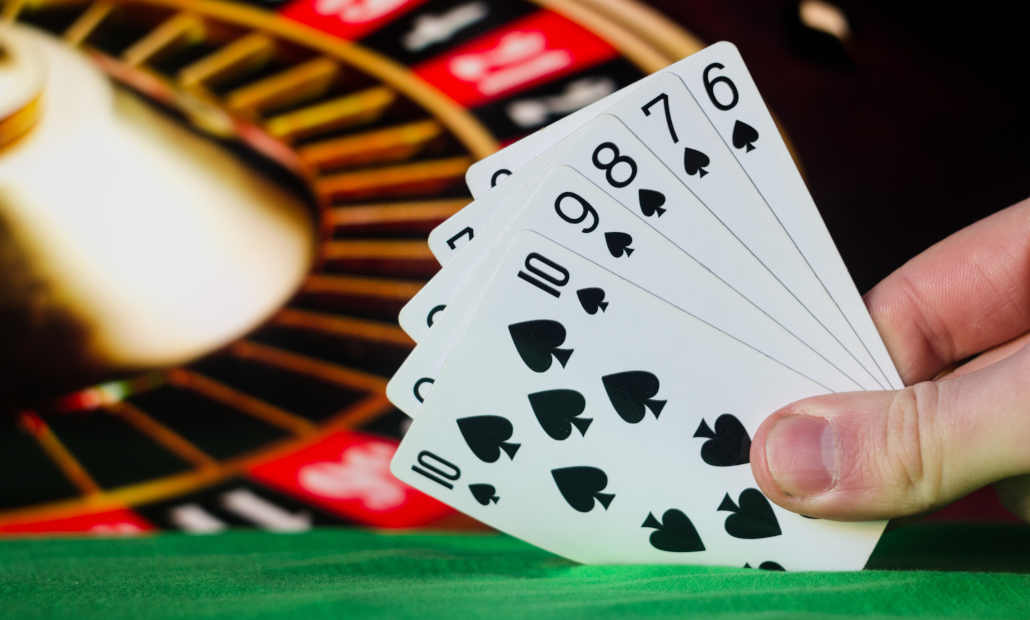
Straight Flush is a poker hand combination that contains five consecutive cards of the same suit.
The highest card in the straight flush combination can’t be higher than a K, in which case the combination would be called a Royal Flush. (if the A is the highest card in the Straight Flush)
Since there are nine times more Straight Flush combinations than Royal Flush combinations, it is “only” the second strongest hand in Texas Hold’em poker.
Below are four examples of Straight Flush hands:
- As 2s 3s 4s 5s
- 5d 6d 7d 8d 9d
- 7h 8h 9h 10h Jh
- 9c 10c Jc Qc Kc
Texas Hold’em Poker Hands: Four of a Kind
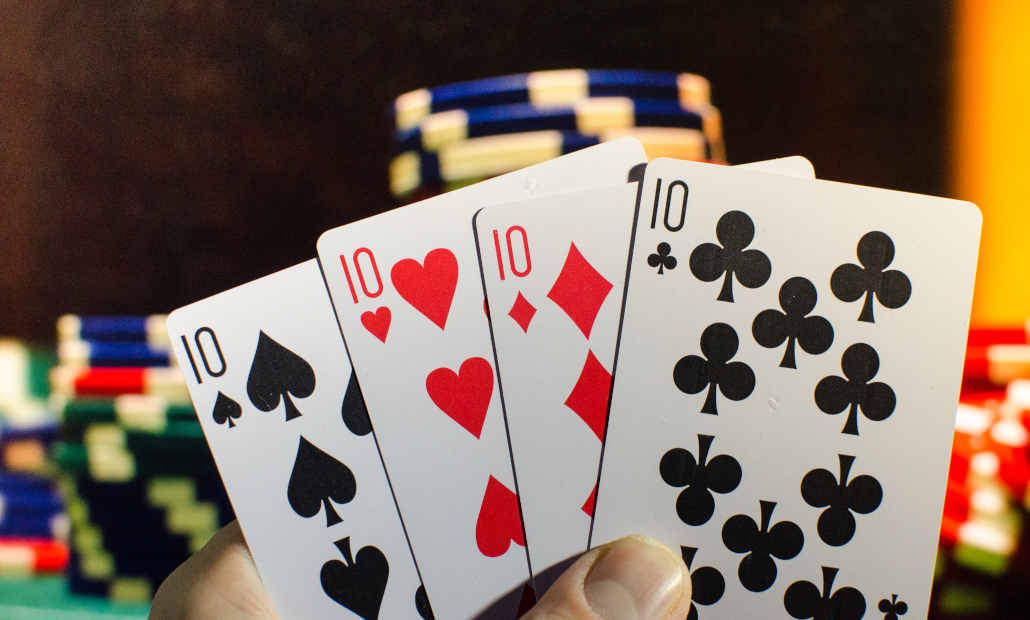
In Texas Hold’em Poker, the term Four of a Kind or Quads is used to describe a poker hand that contains four cards of the same rank.
In most cases, the fifth card in the combination is irrelevant since the strength of this hand is determined by the rank of the four cards.
This makes As Ac Ad Ah the strongest hand combination when it comes to Four of a Kind.
Here are a few examples of Four of a Kind hands:
- Ks Kh Kd Kc Ad
- Jc Jd Jh Js 7h
- 7h 7c 7s 7d 5s
- 2d 2s 2c 2h Qh
Four of a Kind hands contain only four relevant cards (in most cases) but it is enough to outrank other poker hand combinations that content five cards like Straights and Full Houses.
Texas Hold’em Poker Hands: Full House
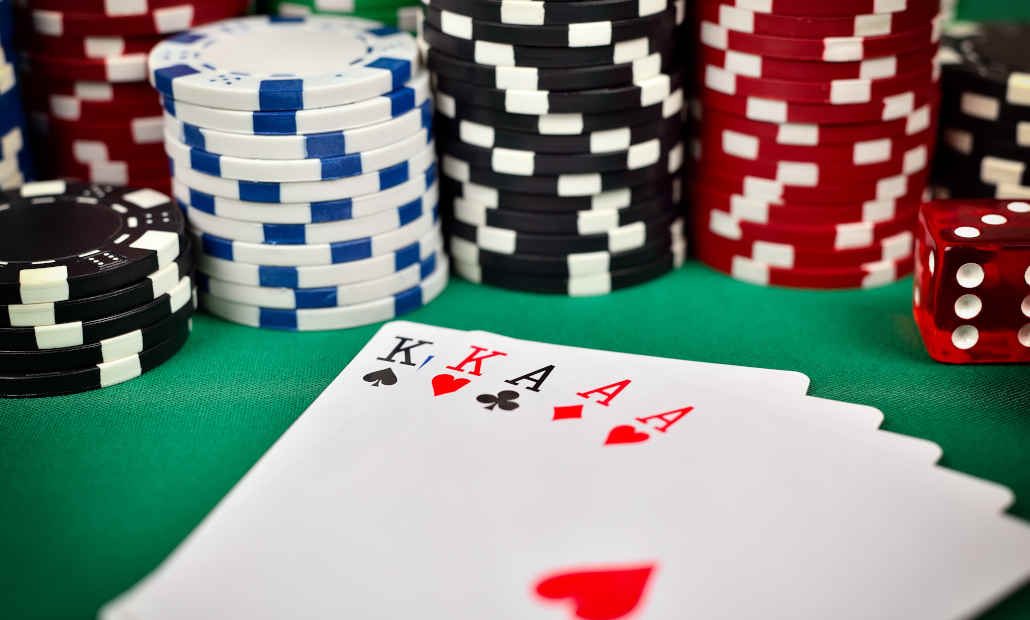
Full House is a Texas Hold’em Poker hand combination that contains three cards of one rank and two cards of another rank.
Each Full House has an additional term that is added to describe the hand more specifically. These terms are created based on the rankings of the three cards followed by the rankings of the other two cards.
For example, a hand combination that consists of Qs Qd Qh Js Jd is called Queens Full of Jacks.
Examples of a Full House:
- Ac As Ah Ks Kd (Aces Full of Kings)
- 8d 8h 8s 7h 7s (Eights Full of Sevens)
- 10h 10d 10s Jc Jd (Tens Full of Jacks)
- 4s 4c 4d 5s 5c (Fours Full of Fives)
Texas Hold’em Poker Hands: Flush
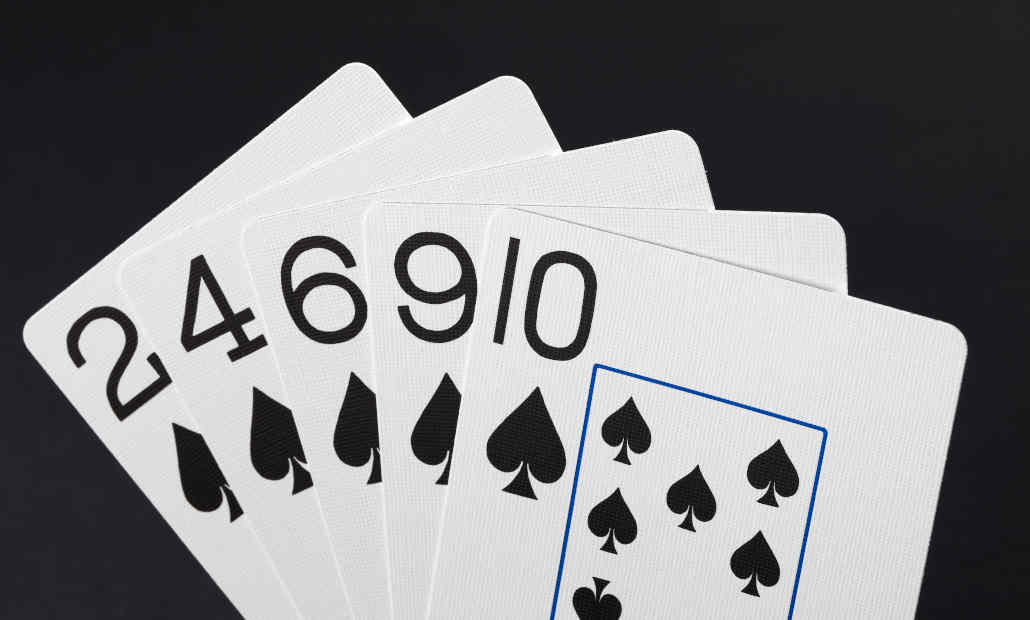
Flush is a poker hand that contains five cards of the same suit of which at least one card is not connected to the others.
When it comes to the strength of the hand that contains a flush, the suits don’t matter. Instead, the strength of the flush is measured by the highest flush card. (or second-highest flush card if the highest card is the same in both hands, and so on).
Some examples of the flush hands:
- Jd 7d 5d 2d 3d
- Qc Jc 10c 9c 4c
- Ah Kh 9h 8h 6h
- 10s 9s 8s 5s 4s
Texas Hold’em Poker Hands: Straight
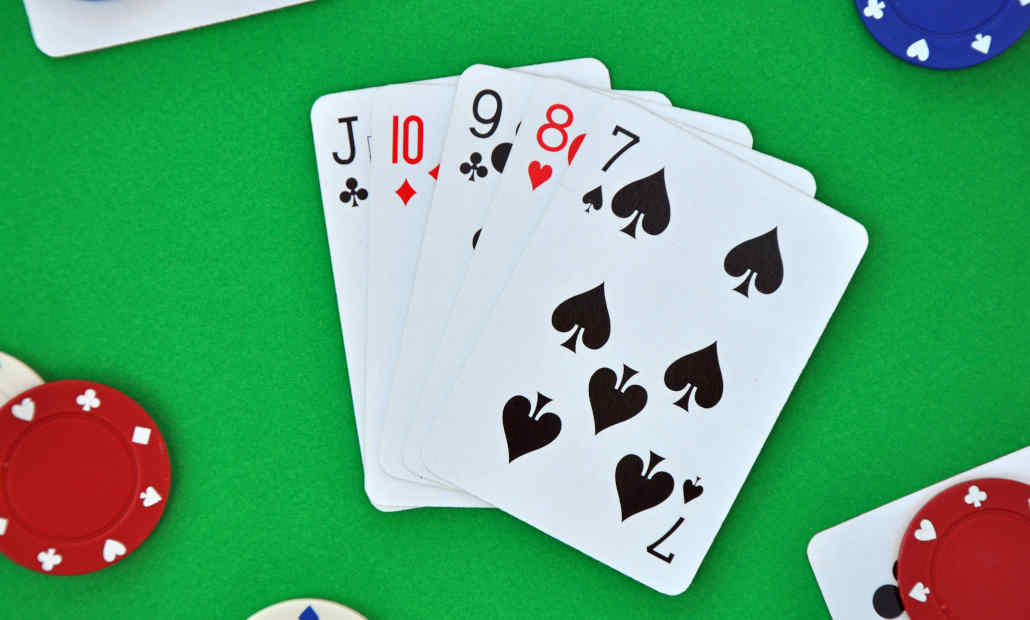
As the name suggests, a Straight in poker represents a hand that contains five consecutive cards of which at least one is of a different suit.
The A high straight is also called the Broadway straight and the five-high straight is referred to as the wheel. Other straight combinations don’t have specific names.
Examples of straight combinations in Texas Hold’em:
- As Kd Qc Jc 10d (The Broadway Straight)
- Ad 2c 3h 4h 5s (The Wheel Straight)
- 6s 7s 8s 9s 10d
As with the Flush, the highest card determines the strength of the Straight.
Texas Hold’em Poker Hands: Three of a Kind
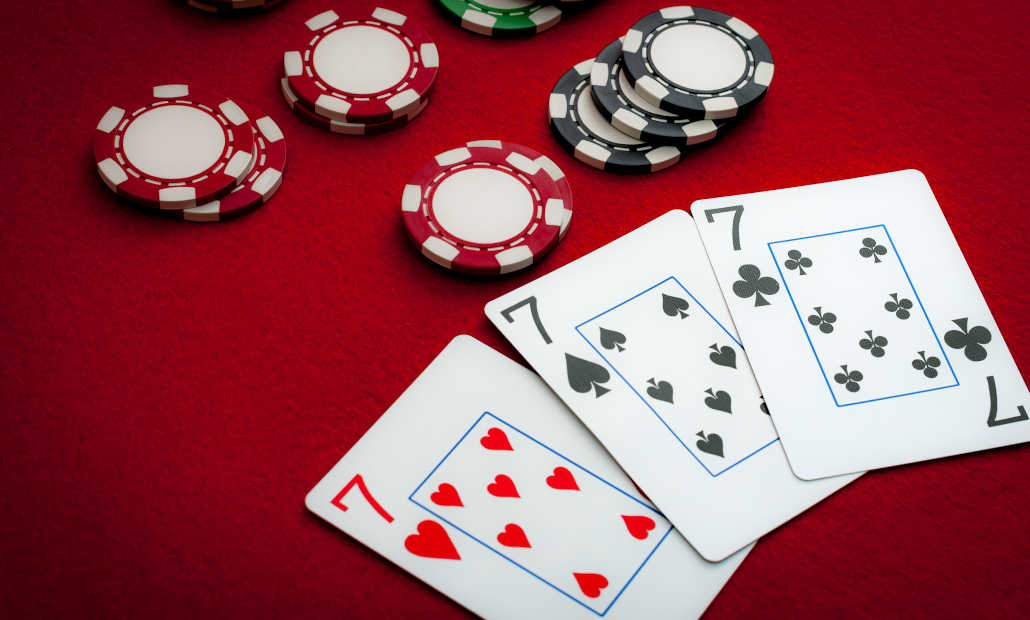
In poker, the term Three of a Kind refers to a hand that contains three cards of the same rank. However, poker players use two different terms for hands containing Three of a Kind, trips, and sets.
If your Three of a Kind hand consists of one card from your hand and two cards from the board, you have trips.
On the other hand, if your Three of a Kind hand consist of two cards from your hand and one card from the board ,you have a set.
Examples of Three of a Kind hands:
- 7s 7d 7h 3s As
- Qh Qd Qs Kh 9s
- 2s 2c 2h 7s 10h
- Jh Jc Jd 4s Qh
The strength of the Three of a Kind hand is determined by the rank of the three cards, the higher the rank, the stronger the hand.
Texas Hold’em Poker Hands: Two Pair
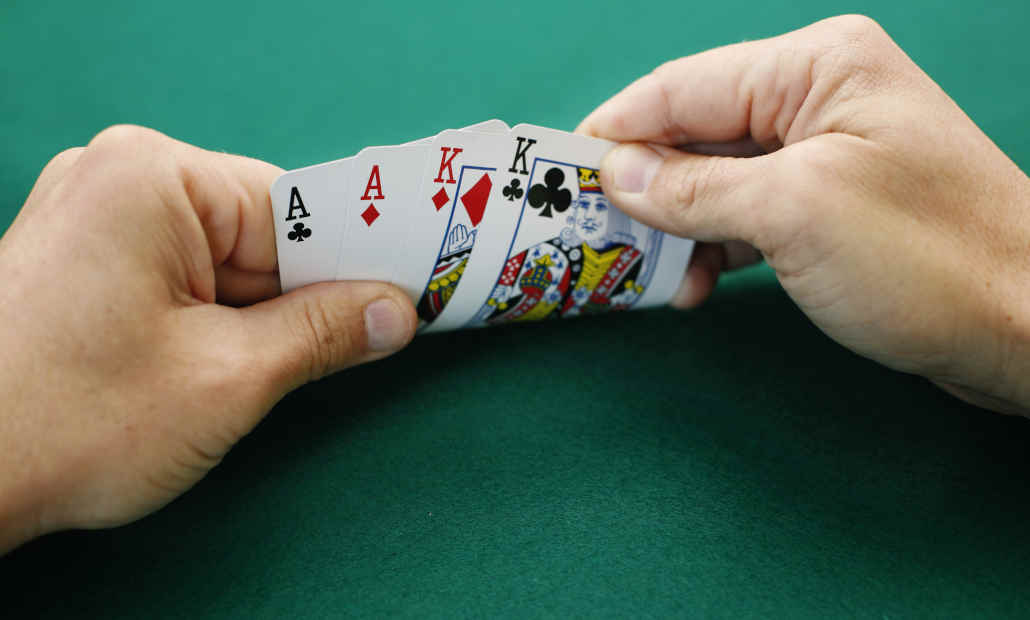
In Texas Hold’em, a player is holding Two Pair if his hand contains two cards of one rank and two cards of another rank.
Because Two Pair is the third most common poker hand after One Pair and High Card there are several different ways in which a player can make it:
- Holding a pocket pair and the board containing another pocket pair
Example: Hole cards: 7s 7d Board: As Ad 4c 5c Jd
- Holding unpaired cards and the board containing both of your cards
Example: Hole cards: Ac Ks Board: Ad Kc 9h 5h 7s
- Holding unpaired cards and the board containing one of your cards and two cards of the same rank
Example: Hole cards: Jh 10d Board: 10s 7c 7d 8c Ac
- Holding unpaired cards and the board containing two cards of the same rank and two cards of another rank
Example: Hole cards: Ad Kd Board 2s 2c 4s 4c 7d
Texas Hold’em Poker Hands: One Pair
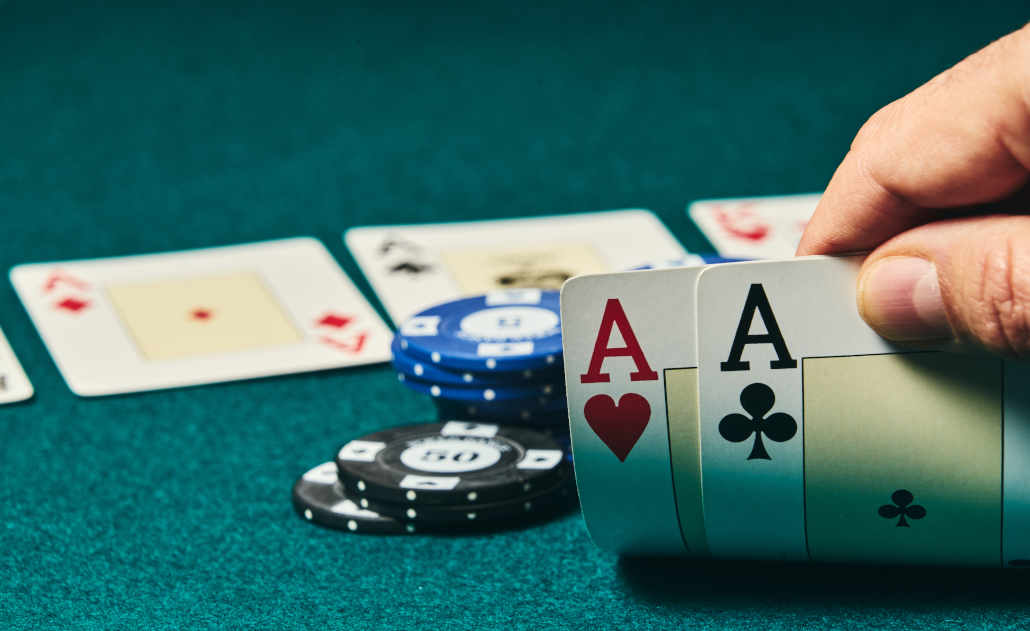
In poker, One Pair is one of the hands you will encounter most often and it consists of two cards of the same rank and three additional cards.
Below we will mention different ways in which you can collect One Pair:
- Having two hole cards of the same rank – holding a pocket pair
Example: Hole cards: Qs Qd Board: Ks 7d 4c 5c Jd
- Having two hole cards of different ranks and the board containing one of your hole cards
Example: Hole cards: 8h 7d Board: Js 6c 5d 8c Ac
- Having two hole cards of different ranks and the board containing two cards of the same rank
Example: Hole cards: Ah 10d Board: 9s 7c 7d 8c 3c
The strength of you One Pair hand depends on the rank of your cards. The higher the rank, the stronger the One Pair hand.
Texas Hold’em Poker Hands: High Card
The worst combination that you can have in Texas Hold’em Poker is a High Card. High Card is the term that is used for hands that don’t contain a made hand (none of the hands we mentioned above).
High Card combinations get their names based on the highest card and the strength of the High Card combination depends on the rank of the highest card (or the second-highest if the highest card is the same, and so on).
A few examples of High Card combinations:
- Ks Jc 10c 7s 5d (King High)
- Ah Qd 7d 4c 3c (Ace High)
- 8s 7s 5d 3d 2c (Eight High)
Texas Hold’em Poker Hands: Chances of Hitting Specific Hands
In the Texas Hold’em version of poker, there are 2,598,960 different combinations of five-card hands.
You can find out what are the chances of getting specific Texas Hold’em Hands in the table below:
|
Hand |
Combinations |
Probability |
Odds |
|
Royal Flush |
4 |
0.000154% |
649,739-to-1 |
|
Straight Flush* |
36 |
0.00139% |
72,192-to-1 |
|
Four of a Kind |
624 |
0.02401% |
4,164-to-1 |
|
Full House |
3,744 |
0.1441% |
693-to-1 |
|
Flush** |
5,108 |
0.1965% |
509-to-1 |
|
Straight |
10,200 |
0.3925% |
254-to-1 |
|
Three of a Kind |
54,912 |
2.1128% |
46-to-1 |
|
Two Pair |
123,552 |
4.7539% |
20-to-1 |
|
One Pair |
1,098,240 |
42.2569% |
1.37-to-1 |
|
High Card |
1,302,540 |
50.1177% |
roughly 1-to-1 |
*Doesn’t take into account Royal Flushes.
**Doesn’t take into account Royal Flushes and Straight Flushes.
Poker Hands Ranked: The Kicker
During most of your poker sessions, these poker hand rankings will be enough for you to know what beats what and who has the best hand.
Flush will always beat a straight, straight flush will always beat a full house, and a higher pair will always beat a lower pair.
But sometimes you will be in situations where both you and your opponent have the same hand.
For example,
- You are holding Ks Qs.
- Your opponent is holding Kh 10h.
- And the board is Kd 8d 4s 4h 5h.
Both you and your opponent have two pair, Ks and 4s. Your final hand is Ks Kd Qs 4s 4h and his is Kh Kd 10h 4s 4h.
In this situation, the kicker comes into play, and since your kicker is better than his (Q > 10), you have the best hand.
If there was an As instead of 8d on the board, you and your opponent would split the pot because both of you would have the same final hand: Ks Kd 4s 4h As.
In that case, kickers won’t play because the A outranks both the Q and the 10.
Texas Hold’em Poker Hands Ranked: Common Hand vs. Hand situations
Apart from the example we mentioned, let us look at some of the most common hand vs. hand situations and the rules that apply.
Two Pair vs. Two Pair
In situations where you and your opponent have two pair, the winner is the player with the highest pair.
Example:
- Ac 7c vs 9s 8s on a board Ad 7d 9c 8c Ks
In this situation Ac Ad 7c 7d Ks beats 9s 9c 8s 8c Ks because the first hand contains the highest pair – a pair of As.
If the highest pair is the same in both hands then the winner is the player with the second-highest pair.
Example:
- Kc 10c vs Kd 5d on a board Kh 10h 2c 7c 5s
In this example Kc Kh 10c 10h 7c wins against Kd Kh 5d 5s 7c because it holds the second-highest pair after a pair of kings – a pair of 10s.
If both of the pairs are the same in both hands then the winner is the player with the best kicker.
Example:
- As 2s vs Ks Qs on a board 9s 9c 4s 4c 7s
In this case, 9s 9c 4s 4c As beats 9s 9c 4s 4c Ks because it has a better kicker to go with the two pair – the A kicker
Flush vs. Flush
In hands where both you and your opponent have a flush, the winner is the player with a higher flush.
Example:
- Kc 9c vs Jc 10c on a board 5c 7c Qc Ad 2d
In this example, Kc Qc 9c 7c 5c wins against Qc Jc 10c 7c 5c because the first player holds the higher flush, in this case – the K high flush.
If both you and your opponent have the same flush, the winner is the player who holds the second-highest flush card.
Example:
- 10s 8s vs 9s 7s on a board As 3s 4s Jd Qd
In this example, although both players have the A high flush, As 10s 8s 4s 3s vs As 9s 7s 4s 3s, the former wins because it contains the second-highest flush card – the 10s.
If neither of the two players holds one of the best possible five flush cards, the pot will be split between them.
Example:
- 4c 5c vs As 7s on a board 6c 7c 10c Jc Ac
In this example, both players have the same flush hand Ac Jc 10c 7c 6c and the pot is split between them.
This specific situation can be confusing for beginners because they feel that the first player should win since he has two flush cards. But in this case, the five best flush cards are already on the board.
If the first player had for example 4c 8c instead of 4c 5c, then he would win because the five best flush cards would contain the 8c – Ac Jc 10c 8c 7c.
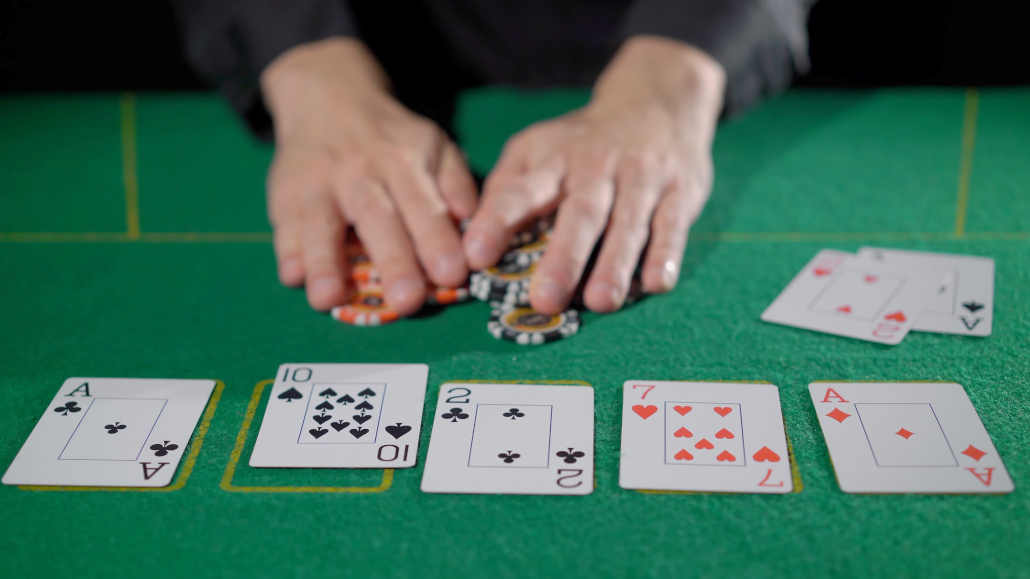
Straight vs. Straight
In straight vs .straight situations, the winner is the player holding a higher straight.
Example:
- 7s 8s vs Kd Qd on a board 9s 10c Jc 2d 2c
In this example, 9s 10c Jc Qd Kd beats 7s 8s 9s 10c Jc because the first hand contains a K-high straight while the second hand contains a J high straight.
If neither you nor your opponent holds one of the best possible straight cards, you will split the pot.
Example:
- 2d 3d vs Ah 10h on a board of 4c 5c 6d 7h 8h
In this scenario, both players play the board because the combination that contains the five best straight cards is already on the board – 4c 5c 6d 7h 8h.
Full House vs. Full House
In situations where both players have a full house, the full house that contains the higher same three-card is stronger.
Example:
- Kh 10h vs 7s 7d on a board of Kc 10c 10s 7c 4s
In this example, 10h 10c 10s Kh Kc beats 7s 7d 7c 10c 10s because the first hand contains three cards that rank higher than the three cards that the second hand contains – three 10s vs three 7s.
High Card vs. High Card
If the hand goes to showdown, and neither you nor your opponent has a made hand, the winner is the player with the best high card.
For example,
- Ac 9c vs. Ks 9s on a board of 2c 3s 7d 8s Jh
In this example, Ac Jh 9c 8s 7d wins against Ks Jh 9s 8s 7d because it contains the highest card – the A.
If the hand goes to showdown and you and your opponent have the same high card, the winner is the player with the second-highest card.
For example,
- Qd Jd vs Qs 10s on a board of Ad Kd 2c 3c 5c
In this hand, Ad Kd Qd Jd 5c is stronger than Ad Kd Qs 10s 5 because in the first combination the 4th highest card outranks the 4th highest card in the second combination (J > 10).
In this case, we don’t look at the first three cards because they are of the same rank in both hands.
10 Best Starting Texas Hold’em Poker Hands Ranked
After you get acquainted with what beats what in poker, the next step towards becoming a winning player is to understand which the best starting hands in Texas Hold’em Poker are.
Having a good preflop hand selection is one of the easiest ways to improve your poker game and avoid marginal situations that can cost you money.
How Do We Evaluate The Best Starting Hands In Poker?
In order to determine the top starting hands in poker, we must evaluate the “equity” of each starting hand against all other possible starting hand combinations.
By equity, we mean the rightful share of the pot determined by the chance of winning the hand.
The higher equity the hand has, the stronger it is.
The easiest way you can do this is to find an online poker equity calculator and then compare the equity of one poker hand against all others or against a specific hand.
The Best Starting Hand in Texas Hold’em: Pocket Aces (AA)
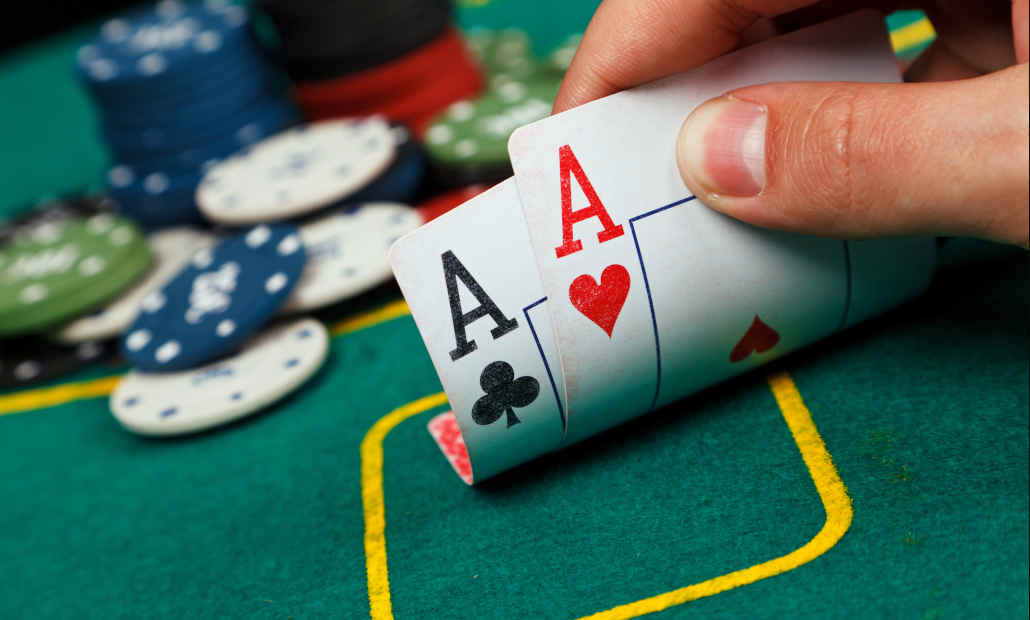
The best starting hand that you can have in Texas Hold’em Poker is Pocket Aces. Pockets Aces are huge favorites in terms of equity against any other two cards preflop.
The most popular terms used for this hand are Pocket Rockets and Bullets.
If we use an online poker equity calculator we can see that Pockets Aces:
- Have an 84.5% chance to win against a random two-card combination
- Have around 82% chance to win against the second-best starting hand in poker, Pocket Kings
- Have around 80% chance to win against QJ suited
Pocket Aces have over 80% equity against any other poker hand preflop. This means that if you were to go all-in with AA preflop you should win the hand 8 out of 10 times on average.
The Second-Best Starting Hand: Pocket Kings (KK)
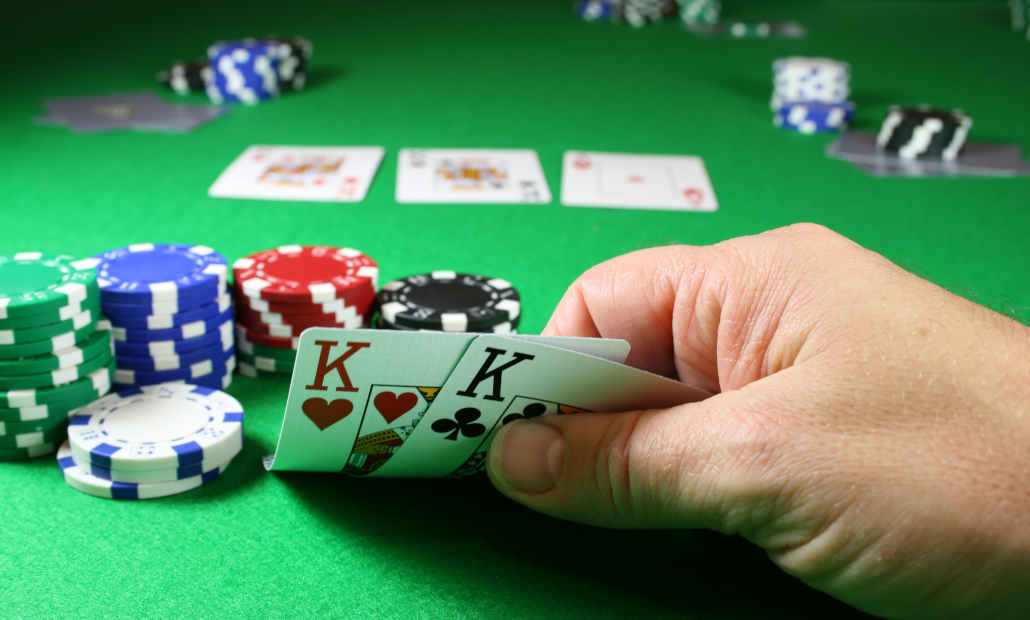
The second best starting hand in Texas Hold’em is pocket Kings. In terms of preflop equity, Pocket Kings are second only to Pocket Aces.
This is how popular “Cowboys” stand regarding their preflop equity:
- Around 18% chance to win against Pocket Aces
- Around 82% chance to win against a random two-card combination
- Around 80% chance to win against J10 suited
- Around 67% chance to win against A2 suited
As you can see, Pocket Kings are huge favorites against hands that don’t contain an ace. And even if you collide with a hand that has only one ace, you can expect to win the hand around 7 out of 10 times on average.
The Third Best Hold’em Starting Hand: Pocket Queens (QQ)
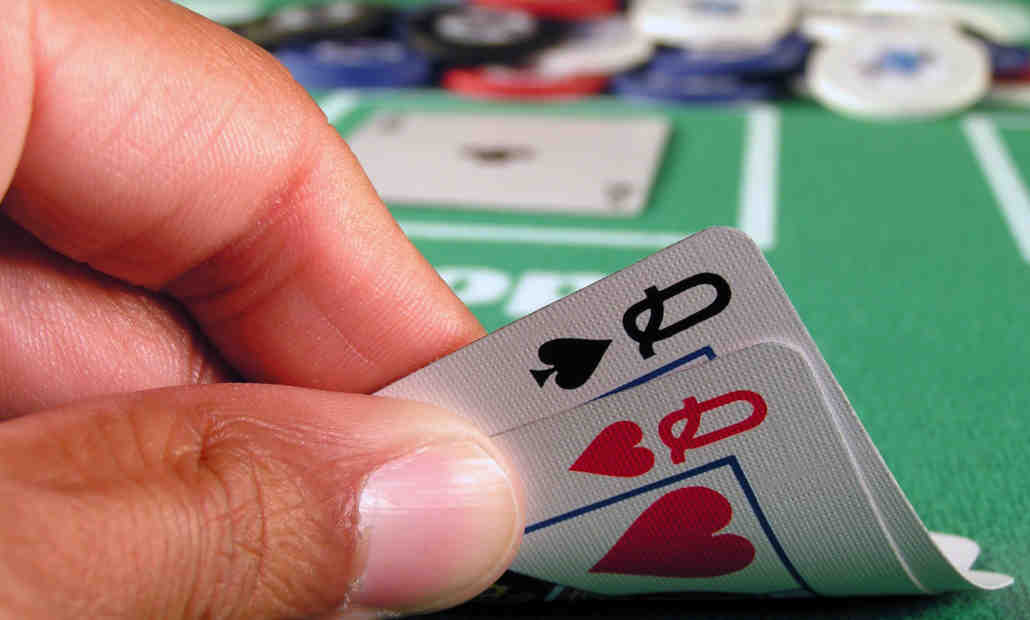
Pocket Queens are the third-best starting hand in Texas Hold’em. The popular “Ladies” trail only Pocket Aces and Pocket Kings in terms of preflop equity.
Let’s look at the preflop equity of Pocket Queens against certain hands:
- Around 18% chance to win against Pocket Kings
- Around 80% chance to win against a random two-card combination
- Around 79% chance to win against 89 suited
- Around 57% chance to win against AK offsuit
In most games, players look to get all-in preflop with Pocket Queens as the hand can be hard to play post-flop because of the possible overcards.
The Fourth Best Starting Hand: Pocket Jacks (JJ)

Pocket Jacks, also known as “fish hooks” are the fourth-best starting hand in Texas Hold’em.
They are also known as one of the hardest hands to play for inexperienced players because they are not as straightforward as some of the other hands on this list.
Chances of winning a preflop all-in with Pocket Jacks:
- Around 18% chance to win against Pocket Queens
- Around 77% chance to win against a random two-card combination
- Around 77% chance to win against 76 suited
- Around 79% chance to win against 55
- Around 67% chance to win against A3 suited
- Around 54% chance to win against AK suited
Although JJ is the fourth-best starting hand in Texas Hold’em, there are quite a few hands that have pretty decent equity against them.
Even if you are all in against a hand as week as A3 suited, you are expected to lose once every three hands.
The Fifth Best Starting Hand in Texas Hold’em: Ace King Suited (AKs)
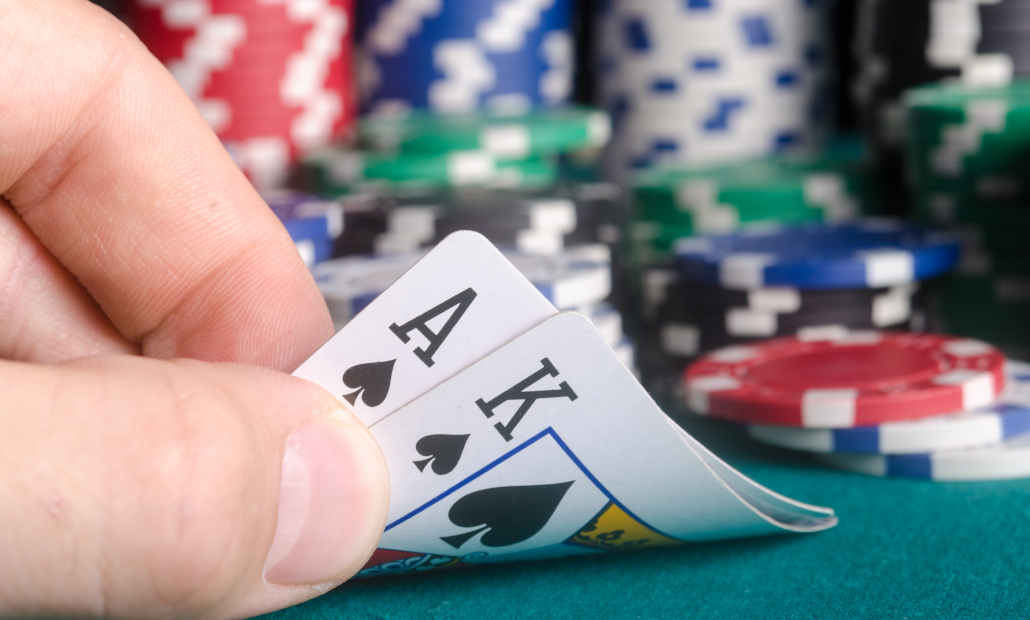
You know how we mentioned that we determine the strength of the starting hand in poker based on the preflop equity it has. Well, Ace-King suited is kind of an exception.
Don’t get us wrong it is a strong hand, but if we look at preflop equity we will see that it has a slightly lower preflop equity than most pocket pairs. So, why is it number five on our list? Well, there are two main reasons:
- Holding AKs reduces the chances of your opponents having AA or KK
- AKs has at least 46% equity against all pairs lower than AA and KK
Let’s look at how Ace-King suited stacks against some other starting hands:
- Around 34% chance to win against Pocket Kings
- Around 47% chance to win against 66
- Around 61% chance to win against 910s
Playing AKs aggressively preflop is the best way to play it as you might have trouble realizing your equity if you don’t hit an A, a K, a flush, or a flush draw on the flop.
The Sixth Best Hold’em Starting Hand: Pocket Tens – (TT)

The sixth hand on our list of the best starting hands in Texas Hold’em is Pocket Tens. Depending on the situation, position and dynamics, Pocket Tens can be considered anywhere from a premium to a mediocre holding.
So let’s take a look at how Pocket Tens hold up against some other poker hands:
- Around 19% chance to win against Pocket Jacks
- Around 75% chance to win against a random two-card combination
- Around 77% chance to win against 65 suited
- Around 81.5% chance to win against 99
- Around 66.5% chance to win against A2 suited
- Around 54% chance to win against AK suited
The Seventh Best Hand In Texas Hold’em: Ace King Off-suit – (AKo)

Ace-King Off-suit is the seventh-best hand you can have preflop. It is also the only hand in the top 10 that isn’t paired or suited.
It is two places lower than Ace-King suited because it has a harder time making a flush.
Some of the math behind AKo:
- Around 64% chance to win against a random two-card combination
- Around 28% chance to win against Pocket Kings
- Around 45% chance to win against 77
- Around 60% chance to win against 910 suited
When it comes to preflop strategy, in most cases you want to play AKo the same way you play AKs, fast and aggressive.
The Eighth Best Starting Hand in Texas Hold’em: Ace-Queen Suited – (AQs)
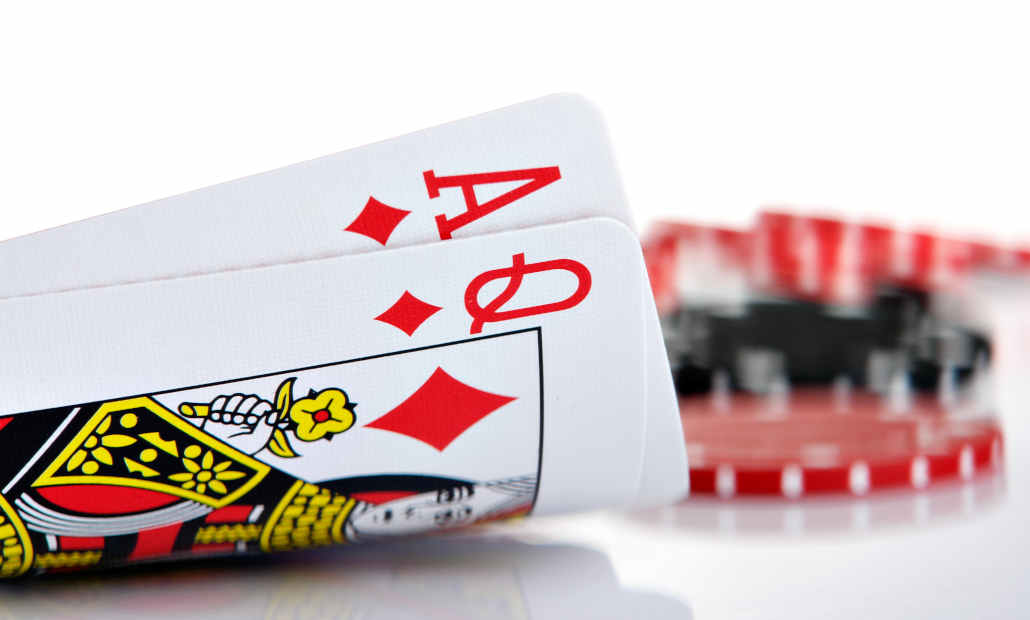
In the eighth place in our list of the best starting hands in Texas Hold’em is Ace-Queen suited. And, just like AKs, AQs might trail some of the pocket pairs in terms of preflop equity but it more than makes up for it with its playability.
Ace-Queen suited odds:
- Around 66% chance to win against a random two-card combination
- Around 35% chance to win against Pocket Queens
- Around 47% chance to win against 88
- Around 60% chance to win against 89 suited
Ace Queen is a good starting hand because it has good preflop as well as good post-flop equity. With the possibility of hitting nut flushes and broadway straights along with top pair, it easily makes into our top 10 list.
The Ninth Best Hold’em Starting Hand: Pocket Nines – 99
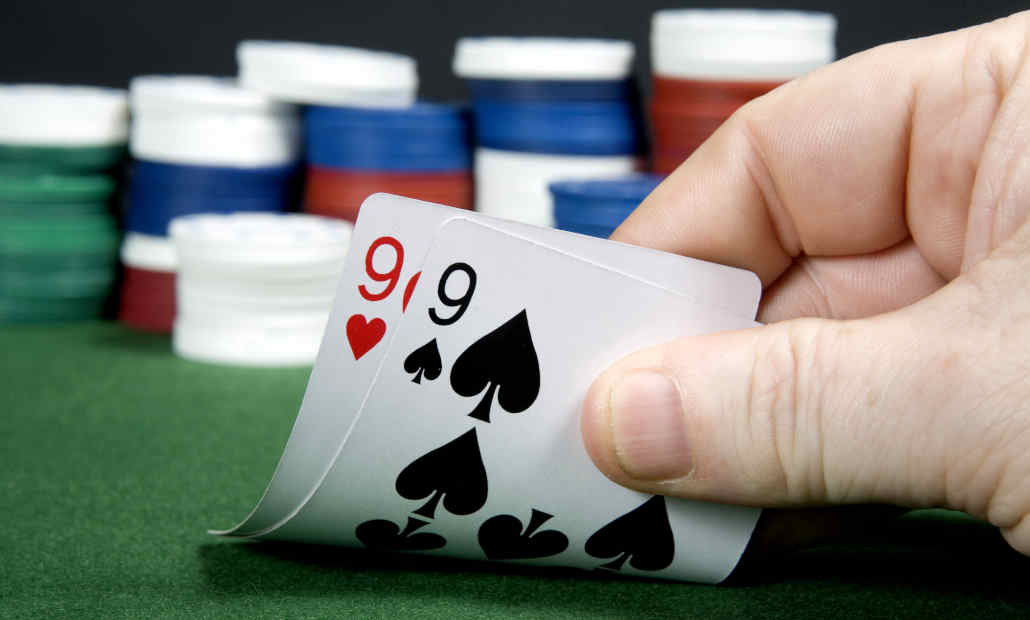
The last pair on our list is Pocket Nines as they are the ninth-best starting hand in Texas Hold’em.
Odds for Pocket Nines:
- Around 18% chance to win against Pocket Tens
- Around 72% chance to win against a random two-card combination
- Around 77% chance to win against 45 suited
- Around 81% chance to win against 88
- Around 66.5% chance to win against A2 suited
- Around 52% chance to win against AK suited
Pocket Nines are a great hand in single raised pots, but things become tricky when you are facing a three-bet. With that said, 99 is one of those hands that benefit from fold equity, and calling preflop all-ins if you have a lot of BB is not a good idea.
The Tenth Best Starting Hand in Texas Hold’em: Ace Jack Suited – (AJs)

The last hand on our list and one more of those hands that made the list thanks to its playability is Ace Jack Suited.
Some of the odds for Ace Jack Suited:
- Around 64% chance to win against a random two-card combination
- Around 33% chance to win against Pocket Jacks
- Around 49% chance to win against 66
- Around 60% chance to win against 78 suited
Ace Jack suited is a pretty strong hand in single raised pots, but like Ace-Queen suited it might become marginal in three-bet pots since you are likely to get dominated by AK and AQ.
Poker Hands Ranked: Ranges
Now that you understand what beats what in poker and what the best starting hands in Texas Hold’em are, it is time to get familiar with hand ranges in poker.
Hand range is a term used in poker to describe a group of card combinations that a player might have in a certain spot.
Because it is almost impossible to know which two cards your opponent is holding in each situation, poker players use hand ranges to guide them through the thought process and to make decisions.
How to Evaluate Player’s Hand Range Preflop
The process of putting a player on a range of hands starts preflop. To begin with this process you first need to know which hands the player opens from which positions and, to be honest, there is no way of knowing every single combination in his range.
But poker is a game of incomplete information, so we have to work with what we have.
You can start by using the ranges you open from that same position.
If you think the player plays fewer hands than you, remove some of the weakest hands from your range and if you think that he plays more hands than you from that position, add a couple of hand combinations to your range.
Now that you have determined his hand range preflop, you will proceed to remove combinations from that range after each of his actions.
Example: You are playing NL25 6 max.
- You are UTG and you raise Ac Ad to $0.75
- HJ calls your raise
- The rest of the table folds
So, how do we determine HJs hand range in this situation? Well, what range of hands would you flat from the HJ vs. UTG raise?
Would you call hands like pocket aces, pocket kings, or pocket queens? Maybe sometimes, but in most cases, you wouldn’t, so we can remove those hands from his preflop range.
Would you flat the UTG raise from the HJ with JTo, 89o or 67o? You probably wouldn’t, so we can also remove those hands from his range.
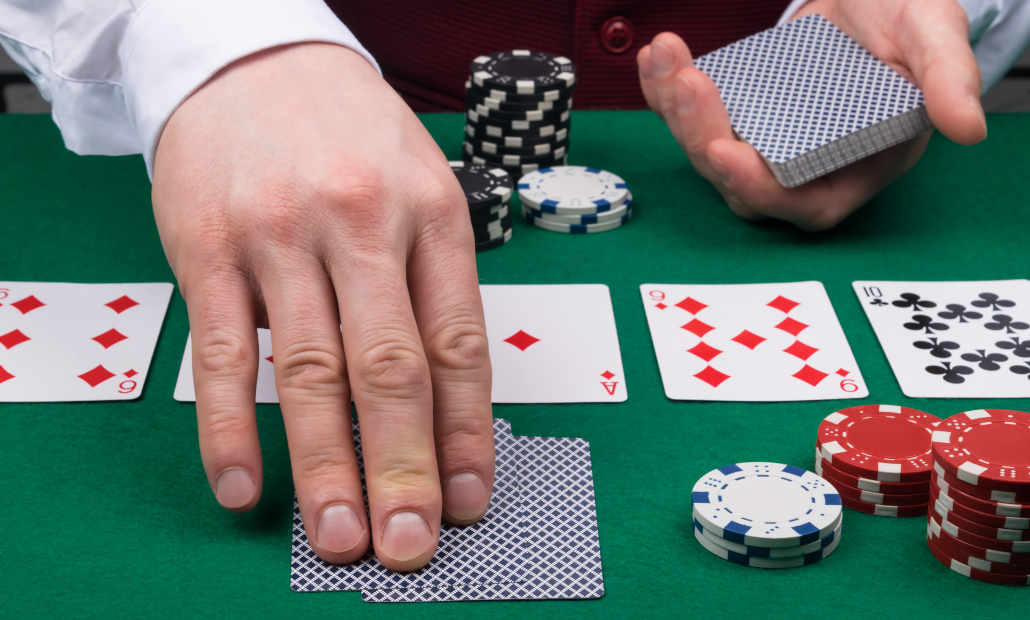
Let’s think what hands would you call in this spot? Maybe some pocket pairs and high-suited connectors? Well, that is your starting point, and now you have something to work with.
Don’t be discouraged if the hand goes to showdown and your opponent shows a hand that you didn’t put in his range of hands.
This happens even to the best poker players and it will certainly happen to you. Just take it as a part of the learning experience.
How To Evaluate Player’s Hand Range Postflop
After you have put your opponent on a range of hands pre-flop, you will then use his actions post-flop to narrow down his range even more.
Let’s continue with the previous example:
- You are UTG and you raise Ac Ad to $0.75
- HJ calls your raise. The pot is $1.85.
- The flop comes:
- Ks Qc 2c
- You bet $1.00
- Your opponent raises.
Again, think about what hands you would raise in the same situation and then add or remove certain hands based on the information you have about the opponent.
Would you raise this flop with two pair or a set for value? Would you raise this flop with a big draw like Jc Tc? Would you bluff this flop against a range as strong as UTG?
These are the questions you need to answer before you decide what to do.
For the sake of the example, let’s say that you would be bluffing a decent amount in this spot with all kinds of draws and you think he would do the same. So you call, hoping that he will miss his draw and keep betting.
- The pot is now $3.85. The turn comes 7c completing the flush.
- The board is now Ks Qc 2c 7c
You check, and your opponent bets $2. You decide to call since you have a nut flush draw to go with your pair of aces.
You continue with your thought process in which you put your opponent on a draw, and now the main question is: Do you think your opponent would keep betting on the turn after his flush completes?
Absolutely, but you also think that he is capable of bluffing with hands like Jd Td so you call.
- The pot is $7.85. The river is a 9s.
- The board is now Ks Qc 2c 7c 9s.
- You check. And your opponent bets $5.
In this case, all of the drawing hands that you put in your opponent’s range of the flop have gotten there. In this situation, you have an easy fold.
Remember Aces have a huge advantage against all-hands preflop, but after the flop equities run much closer together. Don’t be hesitant to fold great starting hands post-flop just because they had a lot of equity preflop.








